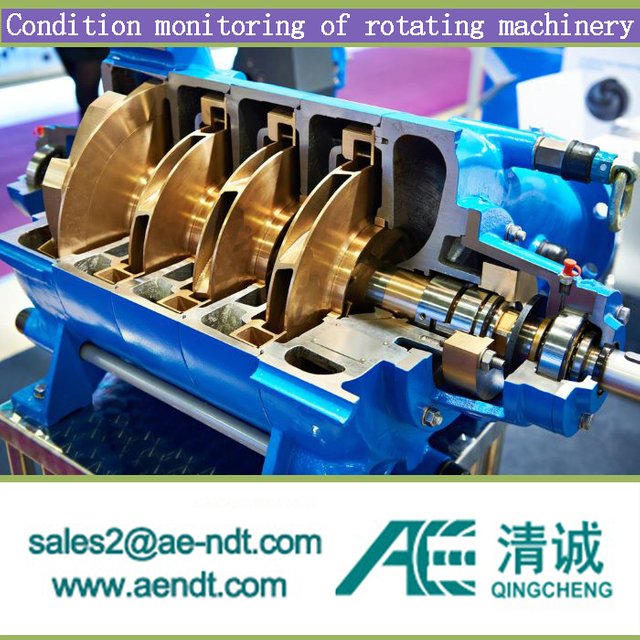The benefits of Machine Condition Monitoring for rotating machinery
What is Machine Condition Monitoring?
Rotating machinery is often critical to the running of processing plants, and their reliability must be guaranteed at all times. Machine Condition Monitoring tracks the working condition of a plant and machinery. In order to identify levels of change including decreasing performance, a developing fault, or failure. These faults, if undetected, or detected too late, can have disastrous consequences. The premise of Machine Condition Monitoring therefore, is that maintenance should only be carried out when we detect these levels of change. Therefore avoiding unnecessary downtime and cost.
Why use QingCheng Ltd for Machine Condition Monitoring?
At QingCheng Ltd, our skilled team of engineers are second-to-none, with the highest level of industry knowledge and the latest technology.
We use acoustic emission testing and vibration analyses to monitor the vibration levels of all types of rotating machinery including fans, pumps, machine tools (machining centre, spindle assemblies, headstock etc.) and motors in order to eliminate common performance problems and extend a machine's lifespan, improve accuracy, and avoiding system failure.
Sound Wave (Acoustic Emission) Monitoring of Rotating machinery
https://www.aendt.com/acoustic/solutions/s7

What are the key benefits of Machine Condition Monitoring?
By carrying out Machine Condition Monitoring, you can:
Form part of a proactive maintenance program for critical rotating equipment monitoring
Predict potential problems and plan maintenance in advance, before it's too late
Increase performance, quality and productivity
Increase reliability and operational safety of your machinery
Save energy and decrease fatigue loading on the bearings and other mechanical supports
Reduce unplanned, costly downtime
Minimise maintenance costs
Reduce requirement for emergency parts
How do you perform Machine Condition Monitoring?
Vibration screening
Potential faults in rotating machinery are often first picked up by vibration measurements. Vibration monitoring is therefore one of the most effective ways to detect developing faults. These include imbalance, bearing wear, misalignment and other mechanical faults such as worn or bent shafts. As this happens, levels of vibration increase. The use of vibration sensors, therefore, detects the changes and alerts plant operators when this becomes excessive. Consequently meaning we can collate and analyse the data from these readings.
See below for an example of vibration monitoring. These detail work from condition monitoring on a furnace, specifically a U21 Quench Fan. In the spectrum readings below, the levels of vibration from the motor and the fan bearings (shown in red) exhibit low and acceptable levels. The plots have been taken from the motor drive end (DE) and fan DE horizontal measurement points. During the visit, the impeller was cleaned and examined for defects and no defects were found.
On completion, we can provide maintenance recommendations to extend the lifespan of the machinery. In this case, the recommendations were:
Please ensure that you lubricate motor and fan bearings on a regular basis, in accordance with the manufacturers instructions. Check the coupling condition on a regular basis and lubricate as required.
IR - Infrared condition monitoring
Another method of machine condition monitoring is IR (or thermography) - where infrared/thermographic cameras are used to detect abnormal heat patterns being emitting from an object which can indicate faults or inefficiencies. We typically use IR to monitor electrical and mechanical conditions of motors, control panels and abnormal friction of bearings.
In the example below, the motor is showing a higher heat trace than the rest on the line - the recommendation for this case was to monitor it for any change.
Will the condition monitoring process damage machinery?
Machine Condition Monitoring does not damage machinery, as external condition sensors are applied to the machine to locate potential problems while it is still running. This also means that you don't have to shut down operations while dealing with issues regarding your machinery, thus avoiding the need to halt production.
How long does Machine Condition Monitoring take to carry out?
We can carry out the process on-site, virtually minutes, depending on the number of points that we are measuring and monitoring. We then upload the data to a main computer with the plant information for analysis which again, takes hours rather than days.